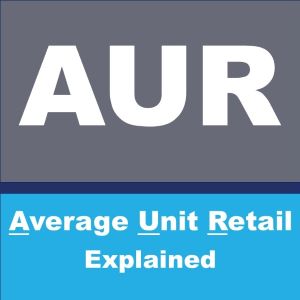Each area of retail responsibility succeeds on the same qualification: good communication. For today’s retailers and suppliers, most business communication happens via EDI. EDI (Electronic Data Interchange) is the most used communication method for buyer and seller (or retailer and supplier) transactions.
After the retailer and supplier form a business partnership, the retailer begins ordering product from the supplier through an EDI communication. In this article, we will explain this initial purchase order request form sent from one system to another: the EDI 850.
What Is an EDI 850?
An EDI 850 (also known as an electronic purchase order) is an electronic data interchange transaction set that contains information about an order, typically sent to a supplier from a retailer as the first step in the ordering process.
Retailers use the EDI 850 for a variety of transactions with suppliers. An EDI 850 can communicate a single purchase or recurring purchases from a supplier. It can also be used to delete or even change an existing order per the purchaser’s specifications.
What Does EDI 850 Include?
The EDI 850 provides all the essential information to ensure a successful transaction between the buyer (usually a retailer) and the seller (usually a supplier). The EDI 850 requires the following:
- Purchase order (PO) number
- Date the order is being placed
- Shipping date or delivery date as requested by the buyer
- Name, address, and additional contact details of the seller
- Name, address, and additional contact details of the buyer
- Billing information of the buyer
- Specific identifiers for the items being ordered (i.e., UPC, SKU, etc.)
- Quantity of the items being ordered and their unit of measure
- Total price for the order as well as a breakout of the price(s) per unit in the order
- All shipping details and requirements (i.e., requested delivery date, shipping method, and preferred carrier)
- Payment terms and conditions
- Any miscellaneous charges or allowances
What Are the Benefits of EDI 850?
If the purpose is to communicate all the details of a purchase, why is an EDI 850 more beneficial than a paper PO or a regular email? The EDI 850 offers a variety of benefits to both buyers and sellers:
Security
Sending information via the EDI process is much safer than doing so via email. For the most part, EDI documents are securely encrypted in delivery. This allows buyers and sellers to communicate data they do not want public without fear of it being intercepted or exposed.
Enhanced Order Processing
The entire order process becomes more efficient when using an EDI 850. To illustrate, when a buyer transfers an EDI 850 to a seller, the order is automatically received by the seller’s system. The system itself will then review all the information on the request and inform the seller of any missing information or incorrect data. The seller can now get back to the buyer quickly to correct the issues and proceed with the order. The EDI adds speed and efficiency to this early step in the supply chain.
Automated Order Verification
A seller’s EDI software receives and translates the EDI 850 immediately. From that point, it is either automatically or manually entered into their system. Part of the EDI workflow is sending a document (such as an EDI 997) back to the buyer to verify the request was received.
Additional EDI Numbers and Functions
Just as the EDI 850 is a standard purchase order transaction, you may be familiar with other EDI forms:
- EDI 810 is used when a seller needs to communicate to a buyer that payment is due. The EDI 810 requests payment and specifies the previously agreed-upon terms. This EDI use can be much more efficient than simply sending a paper or PDF invoice.
- EDI 812 is used when the buyer needs to communicate a credit or debit adjustment as a part of a particular payment. An EDI 812 is more efficient than a paper credit or debit memo and streamlines the reconciliation process for payments against invoices.
- EDI 875 is also a purchase order form similar to EDI 850. However, the EDI 875 is specific to the grocery industry. It allows the grocer or retailer to order items from a supplier, manufacturer, or wholesaler.
- EDI 997 (as referenced above) is also referred to as a Functional Acknowledgement. The EDI 997 is usually an automatic transaction to confirm the receipt of a previously sent EDI document.
There are more EDI documents with specific uses and benefits. If you have questions on EDI transactions and making your supply chain more efficient, ask one of our advisors during a free consultation.
Complete the form below to schedule your free consultation.
EDI 850 for Walmart Suppliers
If you are not currently a Walmart supplier, understanding EDI and the EDI 850 is imperative before applying to do business with Walmart. Walmart requires its suppliers to be EDI-compliant before engaging in transactions.
The reason Walmart requires EDI use comes down to its low-cost philosophy. Running transactions via EDI keeps the supply chain costs down by improving efficiency in PO communication and follow-up.
The Bottom Line
Improving the supply chain has a huge impact on your retail business. From maintaining in-stock and reducing excess inventory to growing margin and lowering costs, all the little improvements add up to big savings and increased sales.
The first step in the supply chain is the initial purchase order, as we’ve examined through the EDI 850. The EDI 850 is an improvement on a standard PO through its security and validation protocols, enhancing this piece of the supply chain to prevent issues down the line.
Your team at 8th & Walton can help your supply chain improvement from end to end and answer your questions about EDI, POs, Walmart requirements, and more. Schedule a free 15-minute consultation with our advisors to learn more.



